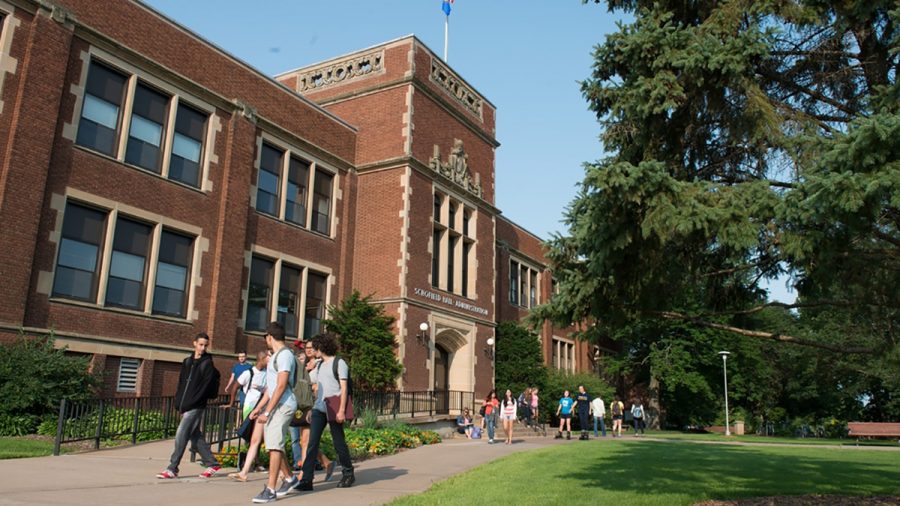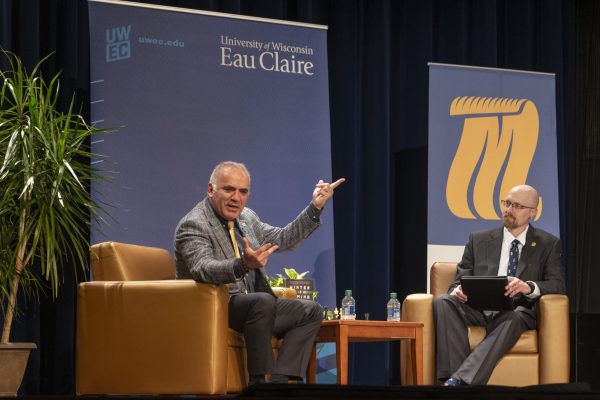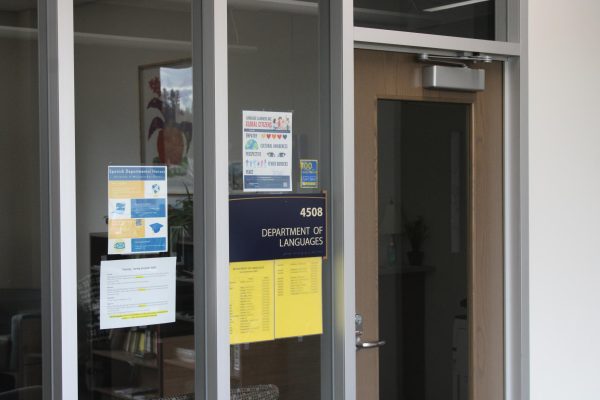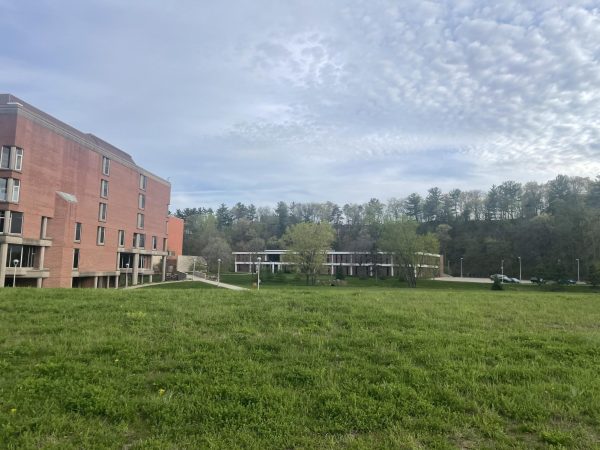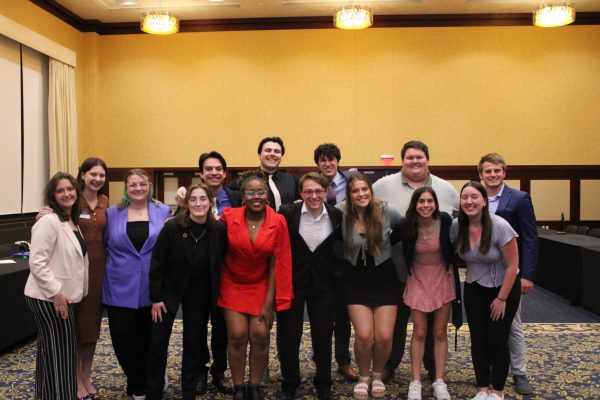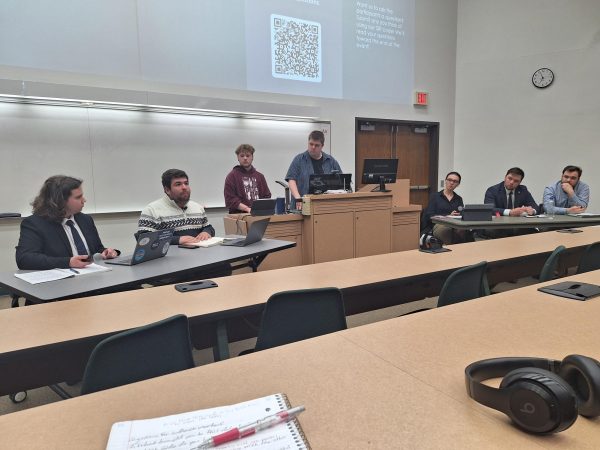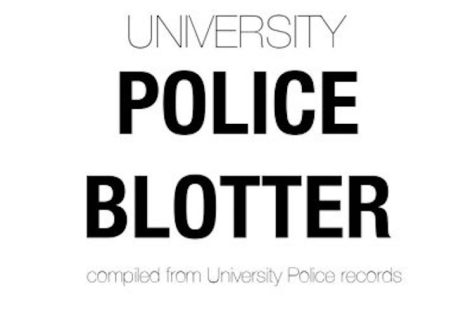Professors move classes online ahead of chancellor’s decision
Faculty and students weigh in on the future of the fall semester
Photo by Bill Hoepner
CJ students like Sibenaller and Meyer said the decision to switch to remote learning “made sense” since students will likely be traveling across the U.S. for fall break.
Before the announcement to transition to remote educational learning made by Chancellor James C Schmidt yesterday, some UW-Eau Claire professors took the initiative to propose this change — for the betterment of the campus.
Now, all students and faculty must make the adjustment to remote learning as COVID-19 cases continue to rise in Wisconsin and the city of Eau Claire.
Mary Worley, an assistant professor in communication and journalism, said she had plans to move all of her classes completely online after Thanksgiving break, due to concerns over the spread of COVID-19.
Worley’s decision was prompted by increasing cases in the state of Wisconsin and her concern for the safety of students. She also wants students to feel comfortable in their learning environment, in case they have to quarantine and cannot attend class.
Worley said right now she holds classes in sizes of around 15 to 25 students through a hybrid format of in-person and online instruction. Five or less students is the average amount to attend a lab in person, while the remainder attend online, she said.
After Thanksgiving, this will not be the case. However, Schmidt, in a video addressing students and staff, said he is proud of the amount of time UW-Eau Claire has maintained in person instruction.
“Our classes are among one of the safest places to be,” Schmidt said.
Worley said her concerns were never about the classrooms, but the shared spaces students frequently use, such as dorms and shared off-campus housing.
This, combined with students now traveling across the midwest to see their families, would likely increase the spread of COVID-19, Worley said.
Morgan Meyer, a third-year organizational communications major, said one of her professors — Peter Hart-Brinson — has made the same decision. The class currently has a hybrid format where students have the option to attend lectures in person one day a week.
Meyer said Hart-Brinson asked the class if they would accept having online instruction after the break, to which all the students in the class said yes.
“It made a lot of sense to the class and I don’t think it’s going to negatively affect anything,” Meyer said.
Hart-Brinson also considered decreasing in-person attendance, as well as increasing flexibility to each student’s unique situations, Meyer said.
“I can tell other people are starting to get a little bit more worried right now,” Meyer said. “A lot of people are going to be going home and seeing other people.”
Will Sibenaller, a fourth-year organizational communications student, said his class began with about 10 in-person students, but now only has one. This, Sibenaller said, is what led him to believe his professor chose to move things online.
“It seemed pretty obvious based on class attendance,” Sibenaller said.
Sibenaller, who has recently recovered from COVID-19, said he has never been concerned about becoming infected from going to class. He believes he was infected by a transmission from his roommate.
If a vaccine were to be released to the public soon, Sibenaller said it would not be ideal to try and return to normal in the spring based on the short timeline.
Meyer said she thinks it’s unlikely a vaccine would be widely accessible by then.
Plueger can be reached at [email protected].
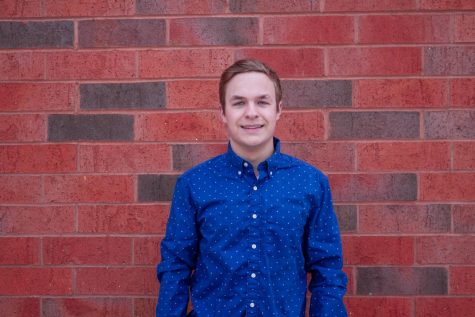
Miles Plueger is a third-year public relations and marketing student. He spent quarantine teaching himself guitar. He also makes a mean chicken stir fry.

